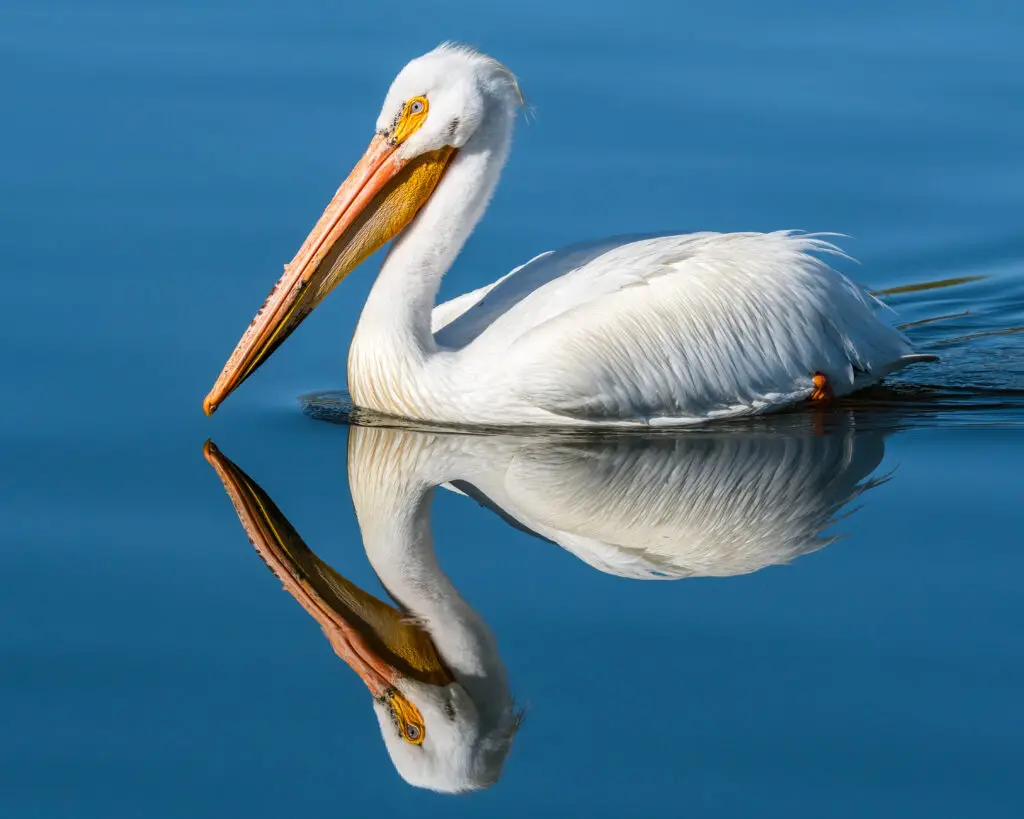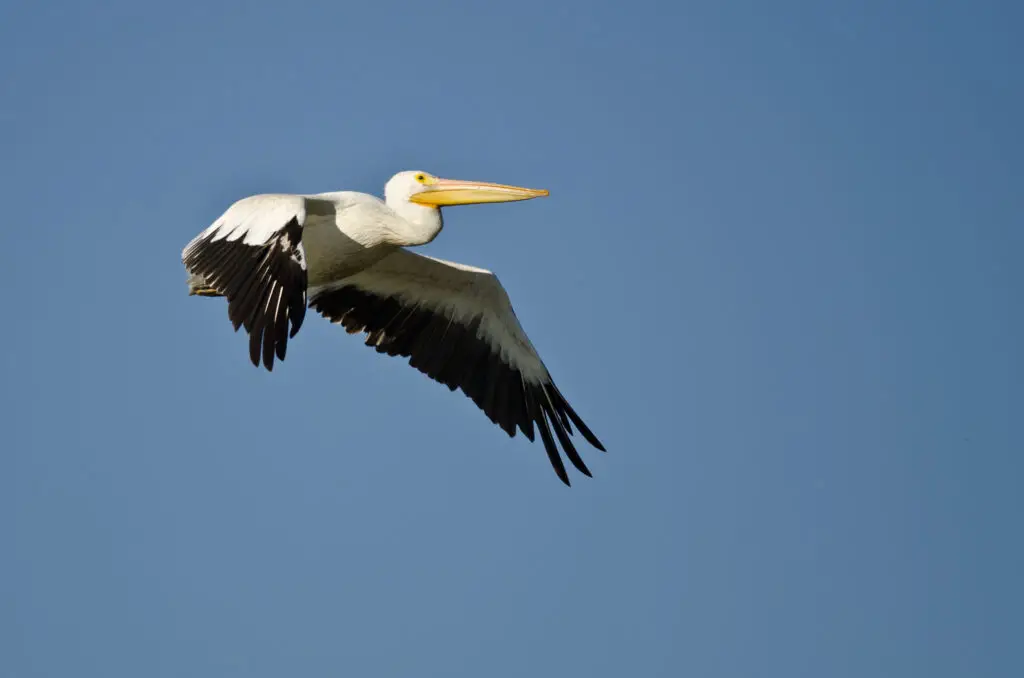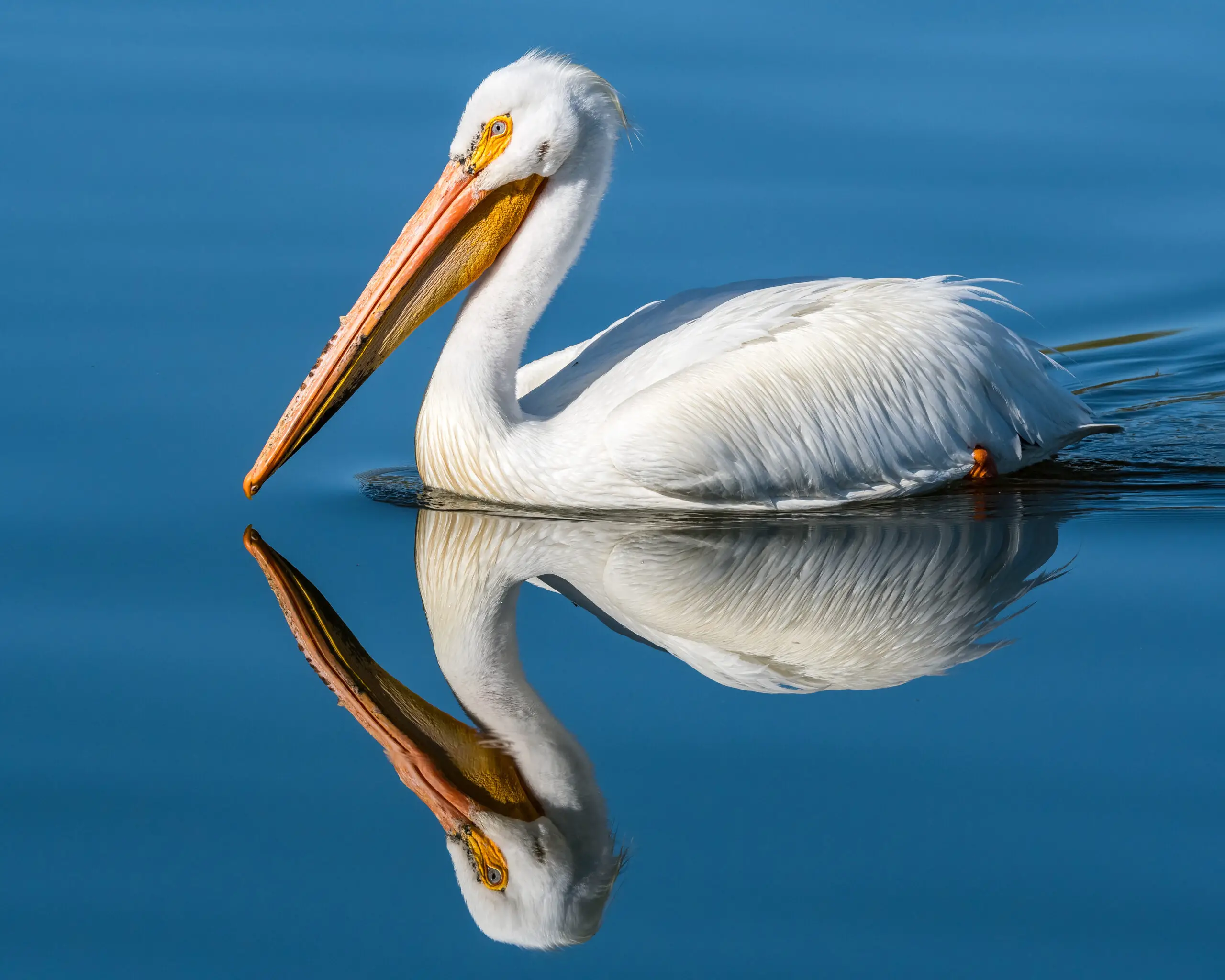The American white pelican (Pelecanus erythrorhynchos) is a large water bird found throughout North America. Known for its distinctive appearance and behavior, the pelican plays an important role in the ecosystem of wetland habitats.
At first glance, the American white pelican stands out with its bright white feathers and enormous wingspan of up to 9 feet. However, it’s not just their size that makes them unique – they also have a massive bill that can hold more than three gallons of water. The pelican uses this bill to scoop up fish from beneath the surface of the water while swimming or floating on top.
Despite being a common sight along coastal areas and inland lakes, much remains unknown about these fascinating birds. In this article, we will explore various aspects of the American white pelican’s natural history, including its habitat preferences, breeding behaviors, migration patterns, and conservation status.

Physical Characteristics
The American white pelican, also known as the western white pelican, is a large aquatic bird with distinctive physical characteristics. It stands at about 4 feet tall and has an impressive wingspan of up to 9 feet.
The body of the American white pelican is mostly white with black primary feathers visible when in flight. Its bill is long and flat with a slight curve towards the tip that measures around 16 inches in length.
Feather coloration plays an important role for this species during breeding season as it changes from pure white to yellow on its head, neck, and breast. This change signals readiness for mating and attracts potential mates.
In contrast, juveniles have brownish-gray plumage until they reach maturity at approximately three years old. The size and shape of their bills allow them to efficiently catch prey such as fish by scooping them up while swimming or diving underwater.
Habitat Preferences
The American white pelican is a waterbird that prefers freshwater habitats such as lakes, reservoirs, and rivers. These birds are found in North America from Canada to Mexico, with the largest populations residing in the western United States. They spend most of their time in or near water, where they can feed on fish and other aquatic animals.
The temperature of the water is an important factor for these birds since they need warm waters to thrive. Therefore, they prefer shallow bodies of water that have temperatures ranging between 60°F to 80°F.
When it comes to nesting materials, American white pelicans require specific elements for successful breeding. They typically breed on isolated islands or shorelines surrounded by water bodies as this provides protection against predators such as coyotes and raccoons. The nest itself is made up of organic matter like sticks, grasses, reeds, and rushes which are gathered by both male and female birds. Additionally, nests must be built at least four inches high because flooding may occur during heavy rainfall periods.
Overall, understanding the habitat preferences of these birds can help conservationists preserve their natural environment while also ensuring their continued survival into the future.
Feeding Behavior
American white pelicans have a wide range of habitats, from coastal areas to inland wetlands. They often prefer large bodies of water with shallow depths and abundant food sources. Their breeding colonies are typically found on isolated islands or lakeshores where they can nest safely away from predators.
When it comes to feeding behavior, American white pelicans are unique in their swimming technique. Unlike other diving birds that plunge underwater for prey, these pelicans dip their bills into the water while floating at the surface. This allows them to scoop up fish and other small aquatic animals without having to fully submerge themselves.
The pelican’s diet preferences consist mostly of fish such as carp, catfish, and trout but also include crustaceans like shrimp and crayfish.
Overall, American white pelicans exhibit fascinating habitat preferences and feeding behaviors that make them an interesting species to study. By observing their distinct swimming technique and understanding their dietary habits, we gain insight into how they survive in various ecosystems across North America.
Breeding And Nesting
The American white pelican is known for its elaborate courtship rituals, which take place on land. Males will strut around with their wings spread wide, while females respond by lowering their heads and flapping their wings in a submissive manner.
Once pair-bonding has occurred, the birds will build a nest together using vegetation found near water sources such as lakes or rivers. The nests are large mounds made up of sticks and other plant material. Both males and females participate in building the nest.
Breeding success of the American white pelican varies from year to year due to population dynamics. Factors affecting breeding success can include weather patterns, availability of food resources, and predation rates.
Although populations have been relatively stable overall, some local declines have occurred due to habitat loss or degradation. Breeding colonies tend to be small and highly localized, making it difficult to estimate total population size accurately.
Despite these challenges, populations have remained relatively stable over time thanks in part to conservation efforts aimed at preserving habitat and reducing human disturbance. As more research is conducted into the species’ reproductive biology and behavior, we may gain a better understanding of how best to manage this iconic North American bird.
Migration Patterns
The American white pelican is a migratory bird that travels long distances in search of food and suitable breeding locations. During the summer months, these birds can be found breeding on islands or remote coastal areas across North America, from as far north as British Columbia to as far south as Mexico.
The most significant populations of American white pelicans are found in the Great Plains region, where they breed along lakeshores and rivers.
Environmental factors play a crucial role in the migration patterns of the American white pelican. These birds require open water for feeding during their migrations, making them vulnerable to habitat loss due to climate change and human activity. Additionally, pollution such as oil spills can have devastating effects on pelican populations by contaminating their food sources and damaging nesting sites.
Conservation efforts aimed at protecting wetland habitats and reducing pollution are essential for ensuring the continued survival of this species.
As such, it is imperative that we continue to monitor and study the migration patterns of these birds so that appropriate conservation measures can be implemented effectively. With global temperatures on the rise and increasing pressure from human activities such as development and industrialization, understanding how environmental factors affect the movements of these birds is critical for their future survival.
By taking steps to protect vital breeding grounds and wetlands throughout North America, we can help ensure that American white pelicans will continue to thrive for generations to come without negatively impacting our ecosystem.
Conservation Status And Threats
The American white pelican is a magnificent bird that can be found in various wetland habitats across North America. They are often seen soaring high up in the sky, with their massive wingspan of up to 9 feet catching the wind effortlessly. With their bright white plumage and striking yellow bill, they are an iconic species that many people admire.
However, despite their impressive physical characteristics, the American white pelican faces significant threats due to human impact. The population trends of this species have been fluctuating over the past few decades, with some colonies experiencing declines while others remain stable or even increasing slightly.
One major threat to these birds is habitat loss and degradation caused by human development activities such as dam construction, shoreline modification, and oil spills. Another issue affecting this species is accidental entanglement in fishing nets and lines which can lead to injury or death. Furthermore, pollution from pesticides and other chemicals can also harm them indirectly by contaminating their food sources.
As we move forward into a rapidly changing world where humans continue to expand their footprint on natural ecosystems, it becomes increasingly important for us to take action towards protecting vulnerable species like the American white pelican.
By implementing conservation strategies such as habitat restoration projects, reducing our reliance on harmful chemicals and pollutants, advocating for responsible fishing practices that minimize bycatch risk, and promoting public awareness about the importance of biodiversity preservation – we can make a difference in securing a brighter future for these magnificent birds and all other wildlife affected by human presence.

Conclusion
The American White Pelican, a large bird species found in North America, is known for its distinctive physical features and unique feeding behavior.
These birds prefer aquatic habitats such as lakes, rivers, and wetlands where they can find fish to feed on.
During breeding season, they form colonies and build nests on the ground or in trees.
Despite being protected under the Migratory Bird Treaty Act of 1918, threats to their population still exist including habitat loss due to development and pollution.
However, conservation efforts such as restoration of wetland areas have shown positive results in increasing their numbers.
The preservation of these important members of our ecosystem should remain a priority through continued research and action towards protecting their environment.

